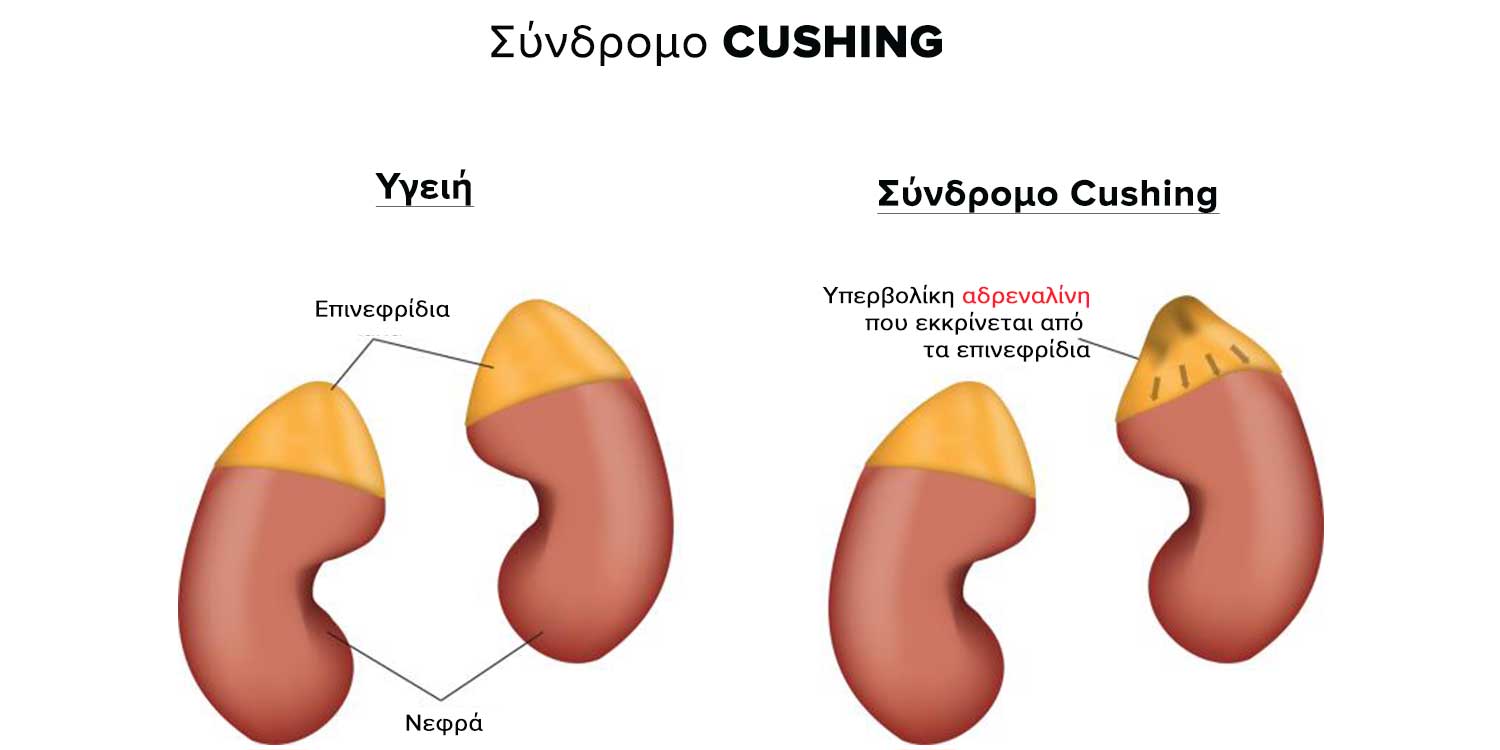Cushing’s Syndrome is a rare adrenal disorder with a frequency of 1:1000000, caused by excessive production or use of cortisol. Cortisol is a hormone produced in the adrenal glands and helps the body respond to stress.
What are the two types of Cushing’s Syndrome?
Cushing’s Syndrome is either exogenous or endogenous.
Exogenous Cushing’s Syndrome
Exogenous Cushing’s Syndrome results from the intake of medication that mimics cortisol. These medications are usually administered to patients suffering from asthma, systemic lupus erythematous, etc.
Endogenous Cushing’s Syndrome
This type results from excessive cortisol production due to problems in the pituitary gland (benign tumours), or adrenal glands (benign and (rarely) malignant tumours), and rarely due to non-pituitary or non-adrenal tumours.
What are the symptoms of Cushing’s Syndrome?
Symptoms depend on age, degree of hyper-secretion of cortisol and the cause of the syndrome. Children with Cushing’s Syndrome present with:
- Fat deposits in the facial area (moon face)
- Weight gain
- Kyphosis
- Extra fat in the abdomen and thin limbs
- Increased hair growth and menstrual disorders in girls
- Sensitive skin
- Risk of developing diabetes mellitus.
How is Cushing’s Syndrome diagnosed?
The endocrinologist will diagnose the disease based on the results of:
- Blood tests measuring cortisol levels
- Dexamethasone suppression test
- Magnetic imaging scans.
How is Cushing’s Syndrome treated?
The best treatment for Cushing’s Syndrome is to surgically remove the pituitary adenoma. If the disease persists, pituitary irradiation and adrenalectomy may be performed. Medication can also administered to inhibit the production of cortisol.

